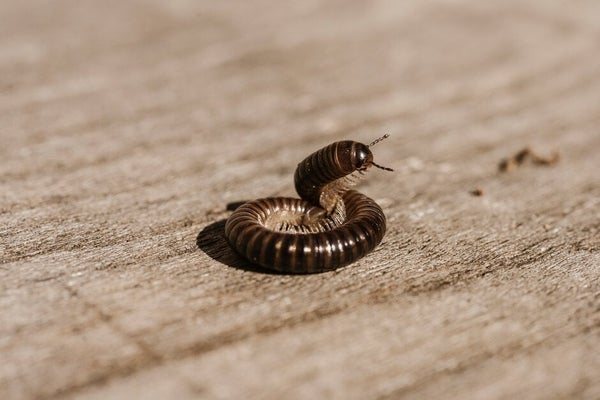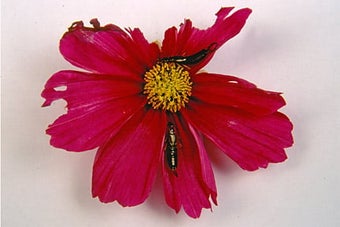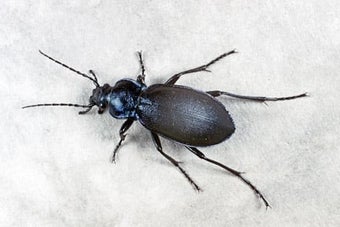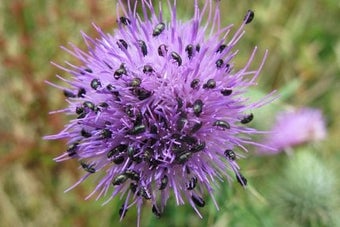
Quick facts
Common name - Millipedes
Scientific names - Blaniulus, Cylindroiulus and Brachydesmus species
Plants affected - Mainly strawberry fruits and potato tubers
Main cause - Many-legged elongate millipedes
Timing - Present all year round but mainly seen summer-autumn
What are millipedes?
Millipedes belong to a group of animals that are known as myriapods. They have elongate segmented bodies with each segment having two pairs of legs. They are detritivores feeding on decaying organic matter and therefore an important part of a healthy garden ecosystem, helping to recycle nutrients.
Centipedes, which are soil-dwelling predatory animals, are also myriapods but they have only one pair of legs per body segment. Centipedes are also much more active and run for cover when disturbed, whereas millipedes often stay motionless.
There are more than 50 species of millipede in Britain, although some are introduced species that are confined to glasshouses. They vary considerably in size and appearance. Some, like Brachydesmus and Polydesmus species, have flat bodies and might be confused with centipedes. Most other millipedes have long cylindrical bodies. Millipedes can be up to 40 mm long and can be black, greyish brown or creamy white. The species most frequently found on plants is the spotted snake millipede, Blaniulus guttulatus. The plants these millipedes are found on have usually had damage initiated by another animal such as a slug. Spotted snake millipedes have a slender, creamy white cylindrical body, up to 20 mm long, with a row of reddish dots along the sides of the body. When disturbed, they lie of their side in a coiled fashion.
Symptoms
Millipedes feed mainly on decaying plant material and the associated fungal growth. They will occasionally damage and other soft growth, such as strawberry fruits, although damage is usually initiated by other animals such as slugs. Millipedes, especially the spotted snake millipede, are sometimes found feeding inside , potato tubers and on other root vegetables. In this situation, they are enlarging damage initiated by slugs or some other animal or a disease. The relatively weak mouthparts of a millipede will make little impression on healthy undamaged bulbs, roots or tubers.

Management
Millipedes feed on decaying organic matter and are part of a healthy garden ecosystem, they should not be controlled. Millipedes rarely initiate plant damage.
Where millipedes are found in potato tubers, steps can be taken to reduce the slug damage. Strawberry fruits are more likely to be damaged when the fruits are resting on the soil. Placing straw or hay around the plants lifts the fruit up and makes them less vulnerable. Keep watered so they grow quickly through this critical stage in plant growth.
Millipedes are food for man other creatures including birds (particularly starlings), frogs, toads, hedgehogs and ground beetles.
Biology
Millipedes deposit their eggs during spring and summer in the soil, either singly or in small batches. These hatch into small versions of the adult animal. It can take several years before they reach the adult stage. During that time they will have shed their outer skins 7-15 times and will have increased their length by adding additional segments to their bodies. During the day, millipedes often seek shelter in the soil or under logs and stones. At night, they roam around on the soil surface and sometimes climb high up on plants.







